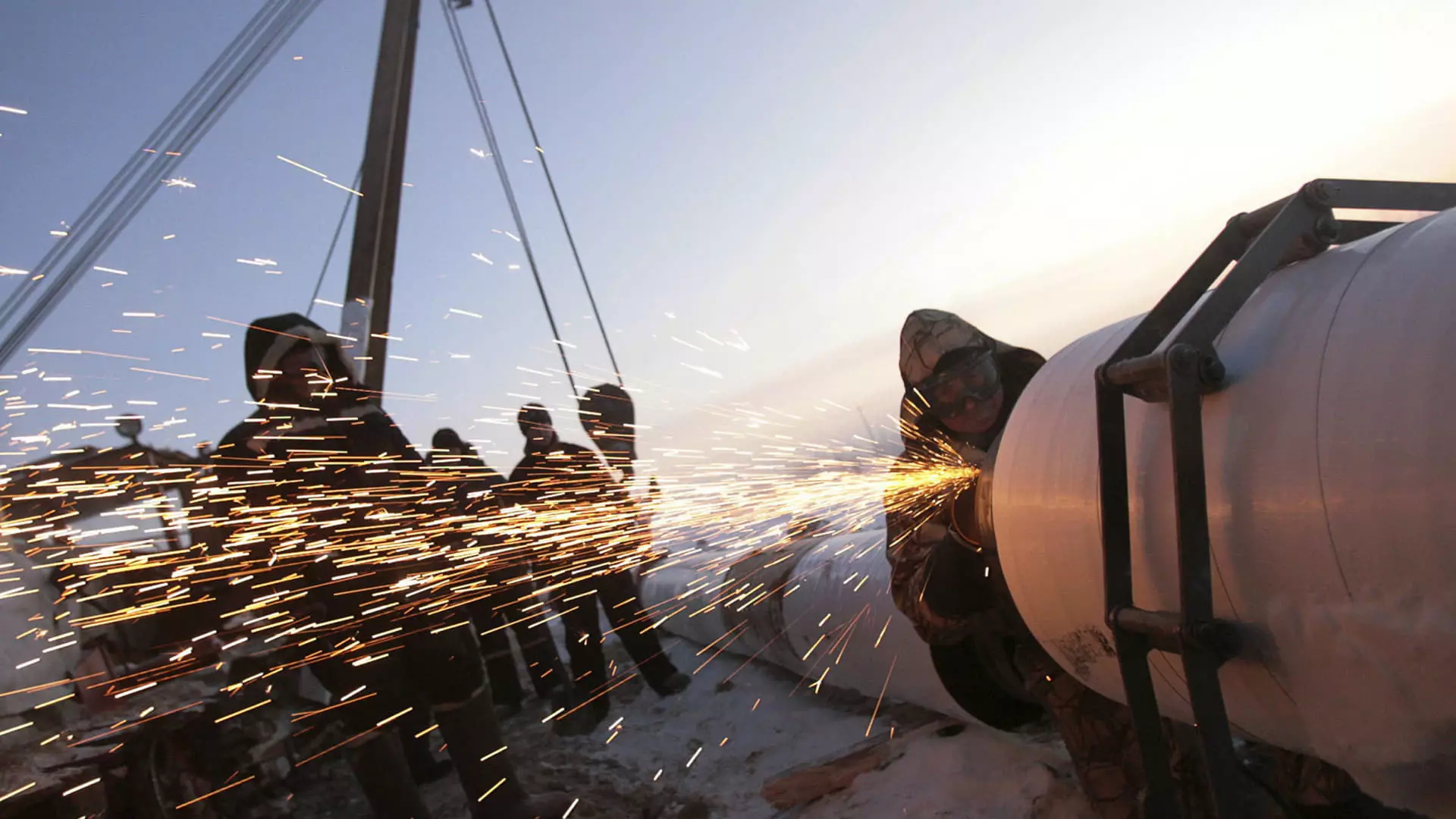For decades, Gazprom stood as the colossus of Europe’s energy supply, primarily through its extensive network of gas pipelines that connected Russia with the continent. This relationship not only showcased the dependency of European economies on Russian gas but also highlighted the geopolitical implications tied to energy security. However, the onset of the Ukraine war in 2022 marked a seismic shift in this dynamic, causing an irrevocable alteration in energy flows and customer reliance.
On a recent Saturday, Gazprom maintained its commitment to supply gas to Europe through the existent Soviet-era Urengoy-Pomary-Uzhgorod pipeline, which snakes through Ukraine. However, complications arose when Austria’s energy supplier OMV faced a suspension of gas flows from Gazprom just hours after receiving a notification of impending cessation from the Russian company. The halt in deliveries marked a significant moment in the evolving tapestry of European energy supply, signaling Gazprom’s precarious position in an increasingly hostile market environment.
Austria’s decision to limit imports from Gazprom was influenced by an arbitration decision that awarded OMV 230 million euros due to unfulfilled contracts by Gazprom for gas deliveries to OMV’s German counterpart. In essence, OMV is exploring a means of offsetting this financial decree against future gas payments, reflecting a jaundiced view of Gazprom’s reliability amidst a backdrop of uncertainty.
Moving forward, the imminent closure of the Urengoy-Pomary-Uzhgorod pipeline at the year’s end exacerbates Gazprom’s dwindling foothold in the European market. Kyiv’s reluctance to renew the transit agreement, which has been instrumental in ferrying Siberian gas to key Central European nations, showcases not merely a political stance but also a strategic positioning aimed at energy independence. As one of the last remaining conduits for Russian gas into Europe is set to shut down, the ramifications of this shift will continue echoing throughout the continent.
Despite maintaining stable deliveries of 42.4 million cubic meters of gas to Europe on the same day as its suspension to OMV, Gazprom’s ability to serve all its clients in the region is coming into question. Data revealed that gas nominations from Slovakia to Austria were plummeting by 16%, indicating a faltering demand. Regional reliance on Gazprom has diminished, and the geography of gas supply is rapidly rearranging itself, with alternative suppliers stepping into the breach.
Chancellor Olaf Scholz’s recent conversation with President Vladimir Putin brings to light the depths of this energy crisis intertwined with diplomatic negotiations. It reveals a Russia eager to revive its former influence in Europe but unable to shake off the profound distrust fostered by recent historical events. According to Kremlin communications, Putin emphasized Russia’s commitment to fulfilling energy contracts, yet the reality on the ground tells a different story. The Russian energy market is gradually losing its European customers, who have successfully pivoted toward alternatives from Norway, the United States, and Qatar.
This diminishing landscape underscores the geopolitical complexities at play. Russia and Europe once enjoyed a lucrative partnership hinged on energy supplies, but war and sabotage have unraveled those ties, resulting in economic repercussions on both sides.
Looking ahead, Gazprom’s energy exports to Europe in 2023 stood at approximately 15 billion cubic meters, a stark contrast to the peak levels experienced in previous years. With Austria curtailing it’s gas imports and significant Russian supplies dwindling to primarily Hungary and Slovakia, the new European energy landscape is markedly different from what it once was.
The transformation of Europe’s energy supply chain signifies not just a moment of crisis for Gazprom, but potentially a new era for energy independence among European nations. As the International Energy Agency indicates, transit routes through Ukraine are meeting a significant portion of gas demand for Austria and its eastern partners, showcasing the adaptability of the market.
As Gazprom navigates this turbulent transition, it faces not only the challenge of restoring its former market position but also the daunting task of recalibrating its operations within a fundamentally altered geopolitical climate. The dawn of a new energy paradigm is upon us, one where dependence on Russian gas may soon become a relic of the past.


Leave a Reply